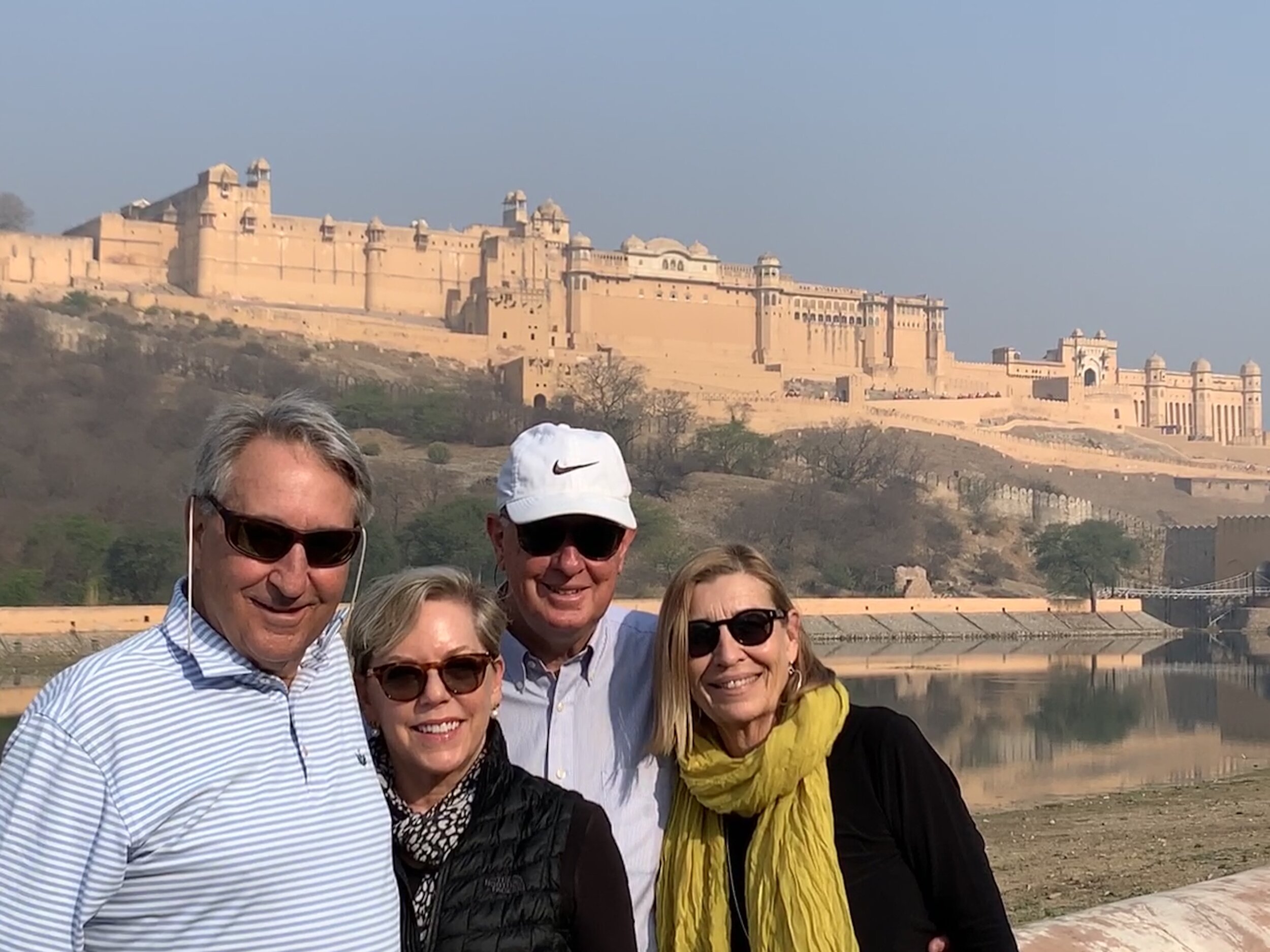Jaipur
The four of us at the base of the Amber Fort
Jaipur is a mere baby among Indian cities. Its “Old City” was built less than 300 years ago. It is also distinct in its layout—a planned grid with wide streets—and the fact that enforced architectural standards yields a consistent color palette. Thus Jaipur is known as the Pink City. As we strolled the markets of the old town, workers were adding finishing touches to a brand new subway system that will connect Jaipur old with Jaipur new when it opens this spring.
From a first-time tourist’s point of view, the main draw here is not in Jaipur itself, but in the hills northeast of the city. Here is the stunning Amber Fort, a massive walled city that takes full advantage of the mountainous terrain. Though the place itself served as a fortified base since the 10th century AD, the fort visited today, another World Heritage Site, was begun by the king Man Singh in the late sixteenth century. It is connected by a subterranean tunnel to the adjacent Jaigarh Fort which is not open to the public.
No animals (or humans) were hurt in the production of this article
There are three options for making the long trek up from the highway to the main gate of Amber Fort: 1) easy—walking, 2) lazy—Jeep, or 3) politically incorrect—elephant. We opted for the full tourist experience and chose the elephants. I don’t think either we nor the animals suffered too much from our choice. From our high perches, we were able to view the man-made lake below the fort, though this late in the dry season the water level was so low that the sunken gardens no longer appeared sunken.
Within the fort, there was much to see and learn. A wheel system imported from Persia brought water from the lake up to the fort, not only for the human inhabitants and their domesticated animals, but also to fill the huge, gemstone-embedded baths of the queens. This water also served as a form of air-conditioning as it flowed through shallow traces and was fanned by the hilltop breezes.
I would rate the Sheesh Mahal, or mirror palace, within the fort the most beautiful interior space we had seen anywhere in India. No surprise that this was built in 1632 for his favorite queen by Shah Jahan, who like many other Royals, often came to Amber in summer to enjoy the cooler temperatures. The walls and ceilings of the Sheesh Mahal are covered in reflective glass and gems arrayed in floral patterns that create a visually intoxicating environment.
One of the four gates into the Old City
We returned to the old city to visit the Jantar Mantar, a large outdoor garden filled with huge sundials and other astronomical instruments. Known simply as the Observatory, it has also been recognized as a World Heritage Site, but I must admit I got little out of seeing it. We walked to the nearby City Palace, but again none of the paintings and clothing exhibits there excited me much after the splendor of Amber Fort.
We enjoyed our stay at the Jai Mahal Palace Hotel, another property run by the Taj group. This is one of two royal palaces in Jaipur that the maharajah has converted to hotels. It is a splendid old building set on 18 acres. Enjoying dining outdoors three times a day was a treat. We also enjoyed the nightly performance of traditional Rajasthani music and dance. A large—perhaps 500 guests—wedding that was held on the grounds during our visit was quite an event. Music started up about 8:00 pm, but the actual ceremony did not begin until midnight. As we were leaving the following morning for the airport, we saw the bride and groom and their ceremonial exit complete with elaborately outfitted horses and carriages. Our departure in our van with our amiable driver Raj was pleasant but decidedly less dramatic.
The sundown candlelighting at the Jai Mahal Palace




